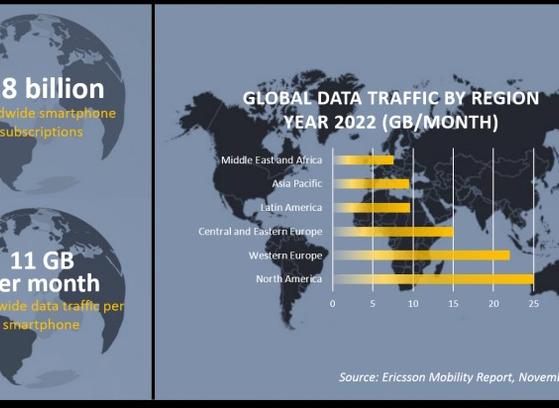The 2016 edition of the IMS World Forum kicked off with an interesting workshop on VoLTE. While the headline news concerned the significant positive growth that has taken place in VoLTE and LTE deployments, factors are emerging that will occupy the industry's attention for the coming months, if not years.
Somewhat paradoxically, these issues are an inevitable consequence of the positive growth. According to GSMA's monthly update in April, there have now been 487 LTE launches in 173 countries. That's pretty much most of the world. In addition to this, there have been 65 VoLTE launches and, RCS, which everyone thought had died some years ago is actually revenant, with more than 30 launches to date. Thanks to the involvement of a key new stakeholder, Google, RCS seems poised to play a major role. A little late, perhaps, but it finally seems to be gaining the promised momentum.
However, this clearly means that more operators are launching VoLTE services in the same country. As a result of this, the question of interoperability between national mobile operators has arisen. Operators must be able to achieve interoperability between their networks via VoLTE. If they cannot, then they will essentially remain as islands, with off-net calls having to default to CSFB mode. This is not tenable, particularly when one considers the claims being advanced for enhanced VoLTE performance. Achieving VoLTE interop is thus of primary importance for the industry and for each VoLTE operator.
To achieve this, each operator has to undertake interop activities with each of its peers. While on one level such interop between systems can be imagined as building on established procedures, in fact there are unique requirements that complicate matters considerably. This is due to the very significant challenges in ensuring interop between VoLTE terminals. In an illuminating workshop hosted by the GSMA, key challenges for VoLTE device interoperability were identified. These have repercussions, not only within a network but also for the goal of achieving interoperability between networks.
In essence, there are three primary cases that must be resolved.
Case 1: Issues surrounding interoperability between different devices within a network.
These include:
- Protocol issues (lots of options for vendors to implement, with the result that vendors may make different choices, leading to incompatibility
- Different interpretation and implementation of standards. Vendors may implement different versions of current standards or, may even interpret them differently
- Variable feature support - not every vendor supports all of the available features
Case 2: Between operators (fragmentation):
- Even with all things being equal, the issues in Case 1 means that interop may not work, which leads to a problem known as fragmentation, which means that even the same devices in different networks may not be able to interwork correctly
Case 3: Open market devices, compounded by the growth of two factors
- BYOD (consumer and enterprise)
- Grey market devices
Case 3 is particularly interesting, as many operators no longer wish to subsidise devices and hence are seeking to cultivate more active markets. However, such policies simply cannot be supported for VoLTE at present, due to the not inconsiderable differences between device capabilities. It seems that an end to subsidies, at least for VoLTE, will likely remain an aspiration for the time being.
As new devices are introduced, problems are likely to reoccur and new problems emerge. Worse, these new devices entering the market may lead to the discovery of new problems on existing devices!
Of course, large vendors can have more devices and better standardisation between them, but new manufacturers are also blossoming, helped in part by the open nature of the Android community. While this drives down costs, it will create more problems. While we need an open market for devices, this will not be without issues for operators and suppliers.
In addition to device level issues, there are also significant (known) issues with:
- Adding new services to basic VoLTE — e.g. ViLTE, VoWiFi
- every step can add problems! - Release planning — software updates may introduce new issues
As a result, for all the focus on virtualisation that occupied many presentations at the conference, the clear and pressing need to ensure interoperability between operators in the same country has become the most important topic in the industry.
Last year, operators were racing to be first to market. Today, they are struggling to ensure they can deliver VoLTe interoperability for their users. Speakers at the conference reported that early feedback on VoLTE service capabilities has been promising, with users appreciating the superior quality and enhanced experience, but these gains will be short-lived if operators cannot go on to deliver full internetwork interoperability. To achieve this, a focus on device interoperability, compatibility and conformity is essential.
Find out how TEMS Monitor Master can help with your IMS testing and IMS monitoring requirements.











